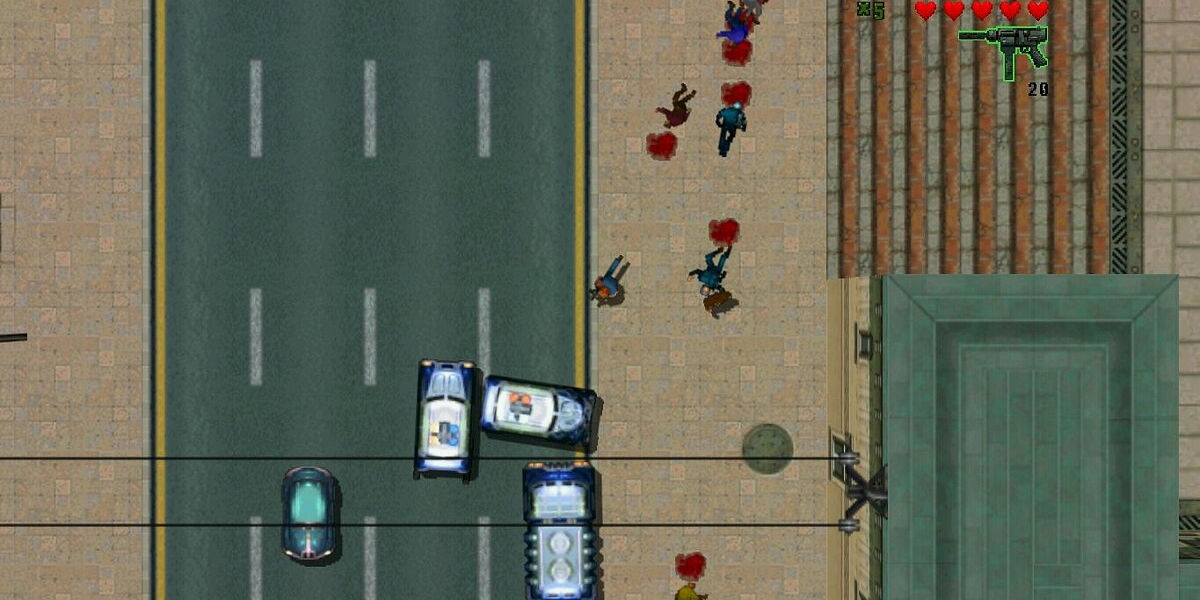When it comes to video gaming classics, the original Grand Theft Auto assumes an extraordinary place. Over the decades, as the series expanded, it has continually impressed audiences with its sprawling, gritty urban environments, groundbreaking gameplay mechanics, and sharp, satirical take on modern society.
The first edition of Grand Theft Auto not only set the tone for the following series but also left an unforgettable imprint on the whole industry. In this piece, we decide to trek down memory lane, re-evaluating the first GTA's open-world design and satirical narrative, and understand what truly makes the first Grand Theft Auto a classic.
GTA's Open-World Design: The Birth of An Unprecedented Gaming Landscape
Launched in 1997, the first Grand Theft Auto broke new ground with its innovative gameplay that combined a top-down perspective with an open-world sandbox environment. The game gave players an unprecedented degree of freedom, allowing them to move across three major cities and committing various criminal activities while avoiding law enforcement.
This freedom was not just about movement. The first GTA open-world design allowed gamers to choose how they want to progress. Whether to pursue mission objectives or roam around the city causing mayhem was totally up to the player. This was relatively innovative at the time and heralded an era of non-linear, open-world games.
Moreover, the game's world was tantalizingly alive. Pedestrians filled the streets, cars and trains moved according to their own schedules, and police actively responded to the player's crimes. This contributed to an immersive environment that firmly held playerís attention, making the first Grand Theft Auto far more than just a game; it was an experience, a virtual reality before such a term commonly dotted the gaming world.
GTA's Satirical Narrative: Telling a Story through Dark Humor and Social Satire
The other integral part of what makes the first Grand Theft Auto a classic was its unconventional narrative approach. Recognizing that video games could be more than just templates for mindless action, GTA incorporated elements of satire and social commentary in its storyline, creating a distinct identity that gained a massive fanbase.
GTA's satirical narrative poked fun at everything from American pop culture to the social dynamics of the 90s. With missions named after popular song titles and dialogue packed with references to celebrities and current events, GTA took an irreverent look at the society it was set in.
Satirizing criminal tropes and cliches, while allowing players to act as criminals themselves, provided a perspective on the crime genre that no other game of the time offered. The over-the-top violence that characterized the game was purposefully ridiculous, further emphasizing the satirical narrative the developers were aiming for.
Revisting the Roots
The first Grand Theft Auto, while not nearly as visually stunning as its successors, planted the seeds for what would become a revolutionary gaming experience. Due to hardware restrictions of the time, the game was presented from a top-down perspective, comparable to popular 2D games of the 90s. Yet within the confines of this seemingly simplistic presentation lay a deeply intricate and multilayered gaming world ripe for exploration.
Upon entering the streets of Liberty City, Vice City, or San Andreas, players were instantly greeted with an abundance of choice. Unlike many games of its era that adopted a linear gameplay style, Grand Theft Auto offered an open-world playground where choice was king. Players could follow the main narrative, undertake side missions, or simply revel in the possibilities of the open-world design. As gamers, we took delight in this newfound freedom and in the outrageous and often humorous scenarios that unfolded.
Something that perhaps set Grand Theft Auto apart from other action-adventure games at the time was its unapologetic embrace of satire. The narrative was infused with radiantly colourful characters who seemed like exaggerated caricatures of various stereotypes, from the mob boss to the street-smart hustler. Every pedestrian, every NPC (Non-Player Character), even the radio stations pulsing with parodic content, collectively added to a larger-than-life, picturesque world where satire reigned supreme.
GTA: A Satirical Powerhouse
One might argue that the first GTA succeeded largely because it gave gamers much more than just a game; it presented a richly devised world that poked fun at American culture. It was biting, sarcastic, and thought-provoking. As you navigated crime-riddled streets, carjacked random vehicles, and encountered outrageous personalities, you were essentially part of a grand social commentary ñ one that was full of pop culture references, dark humour, and critique on the societal norms of the 90s.
The game didnít shy away from mature themes or controversial elements either. The adult content and violent gameplay stirred up a whirlwind of controversy that, paradoxically, only amplified the game's popularity. Players found GTA's boundary-pushing approach refreshing, and it quickly became the poster child for a mature, edgier form of video gaming.
Legacy and Influence of the First GTA
Almost 25 years after its initial release, the influence of the first Grand Theft Auto is still palpable. Its innovative approach to gameplay, from its open-world exploration to its satirical narrative, has paved the way for countless successors and imitators.
The franchise has evolved exponentially over the years, with each new iteration building on (and often surpassing) the original's achievements. Yet, Grand Theft Auto's unabashedly irreverent spirit remains even today, harking back to the foundations laid by the first game and reminding us of the daring pioneers who redefined what was possible in the realm of video games.




